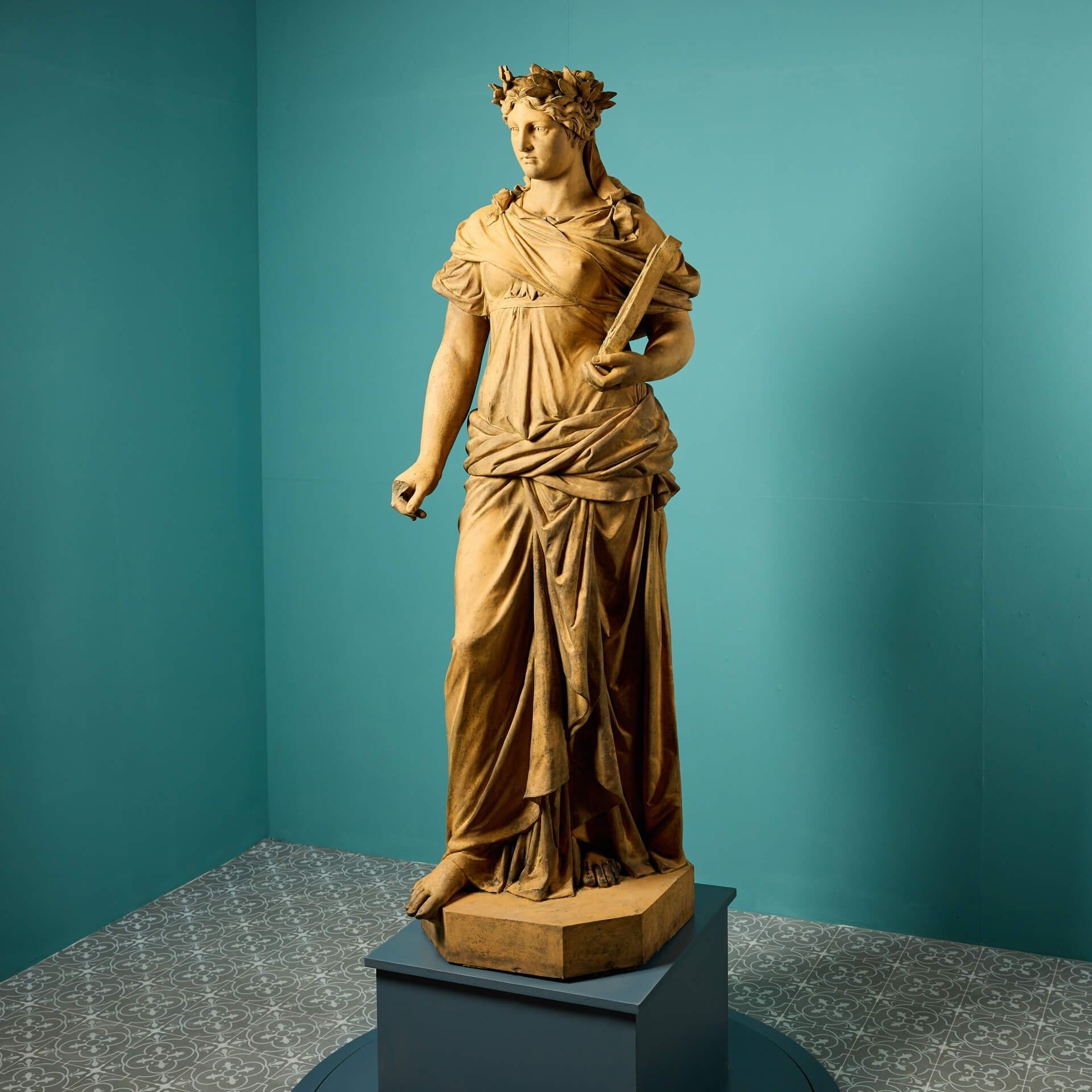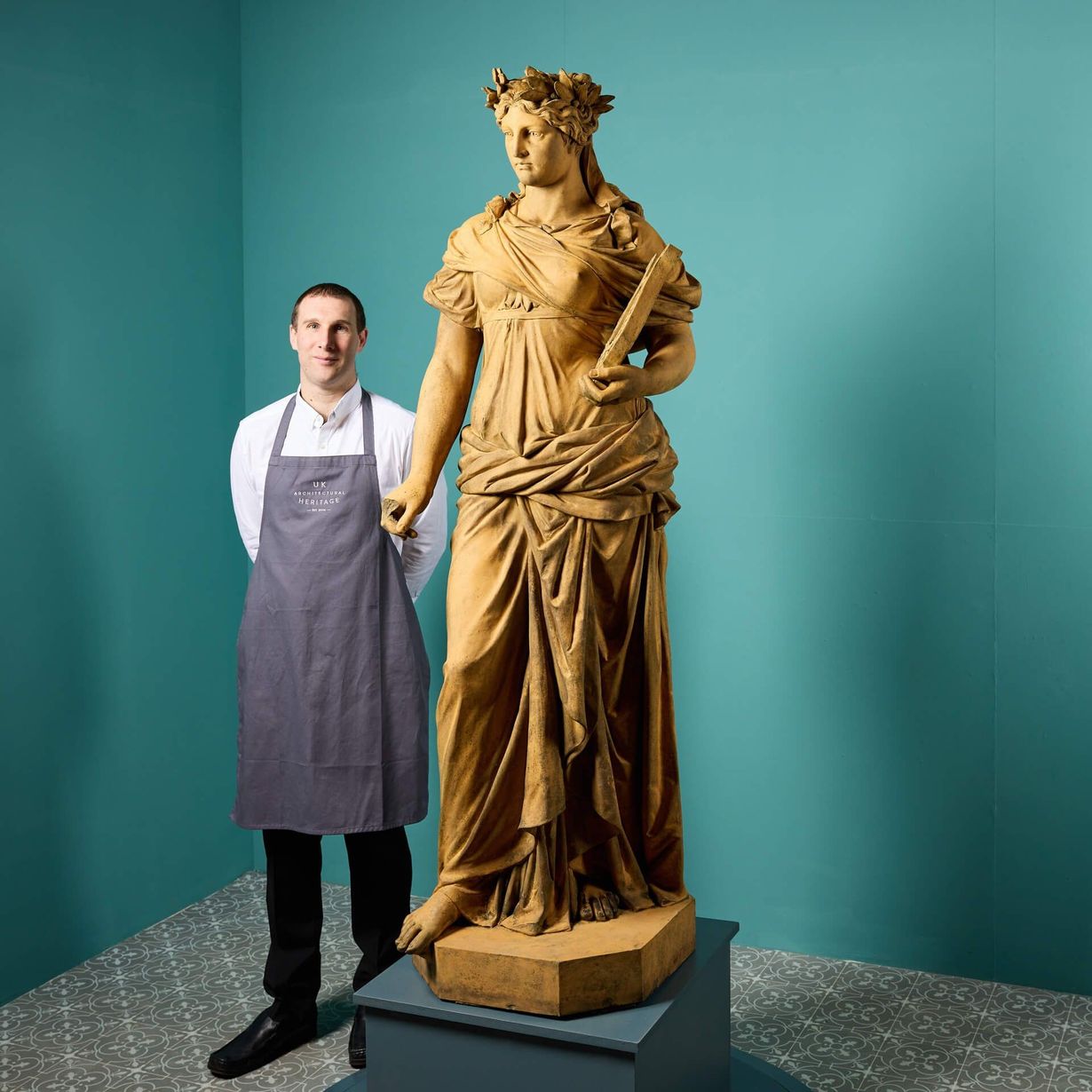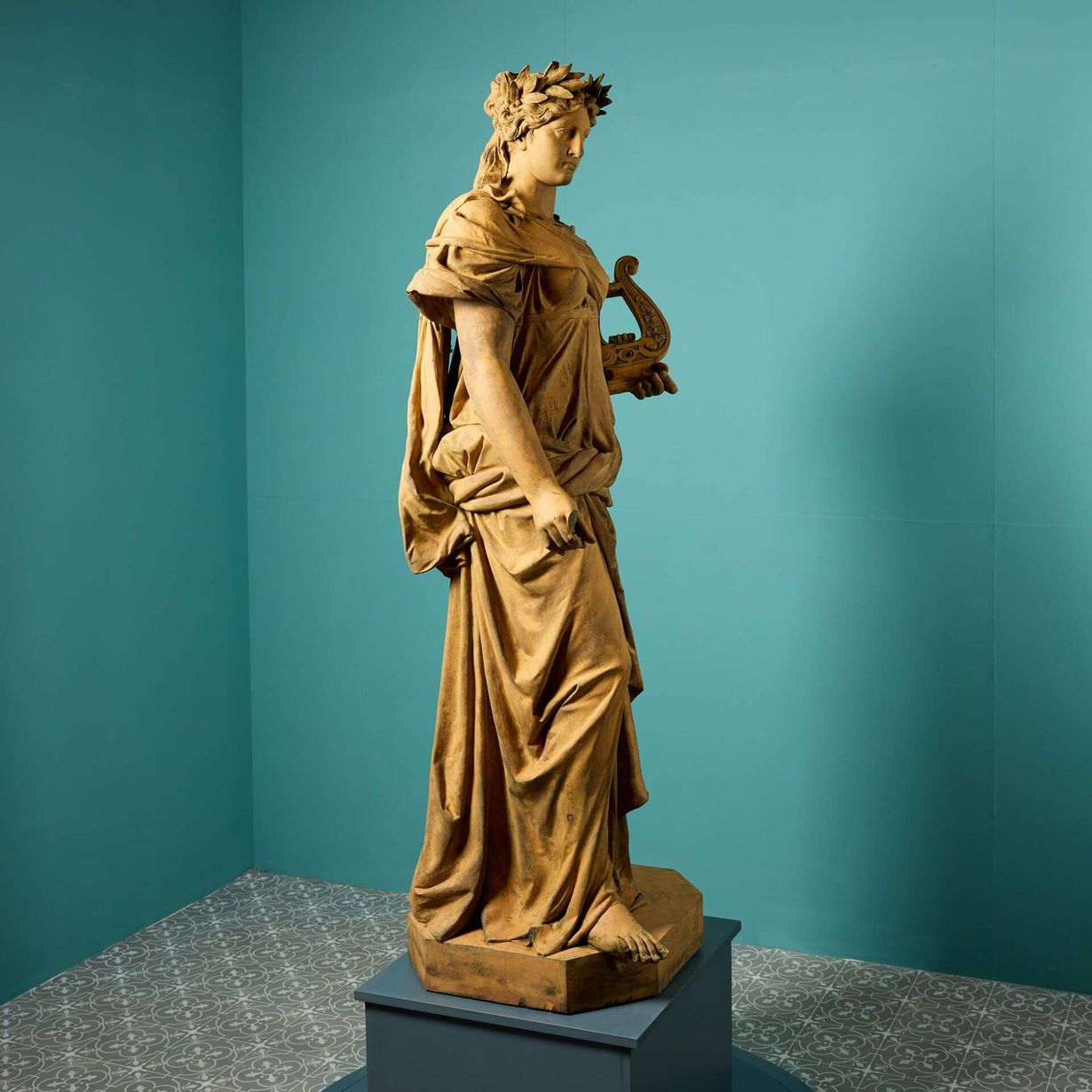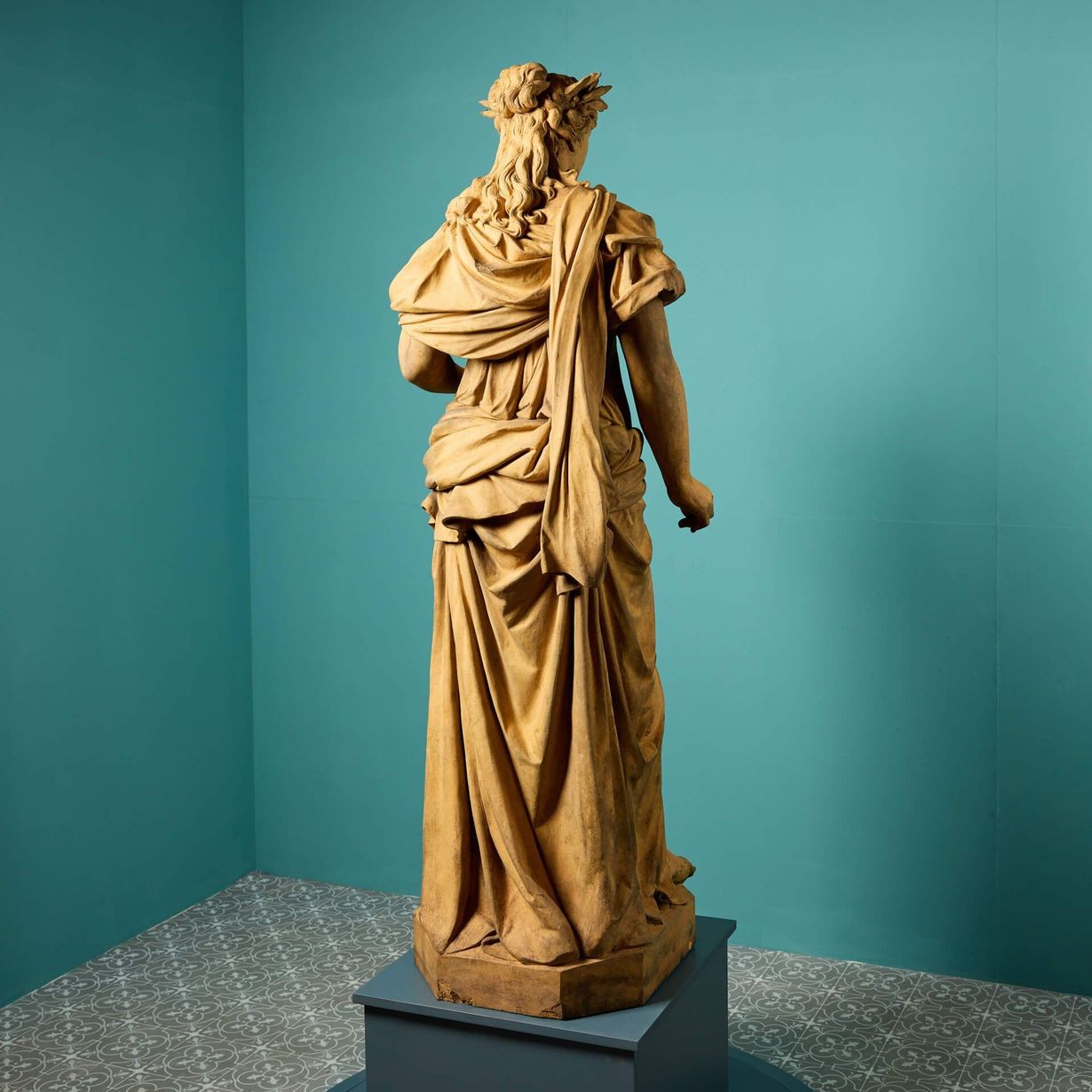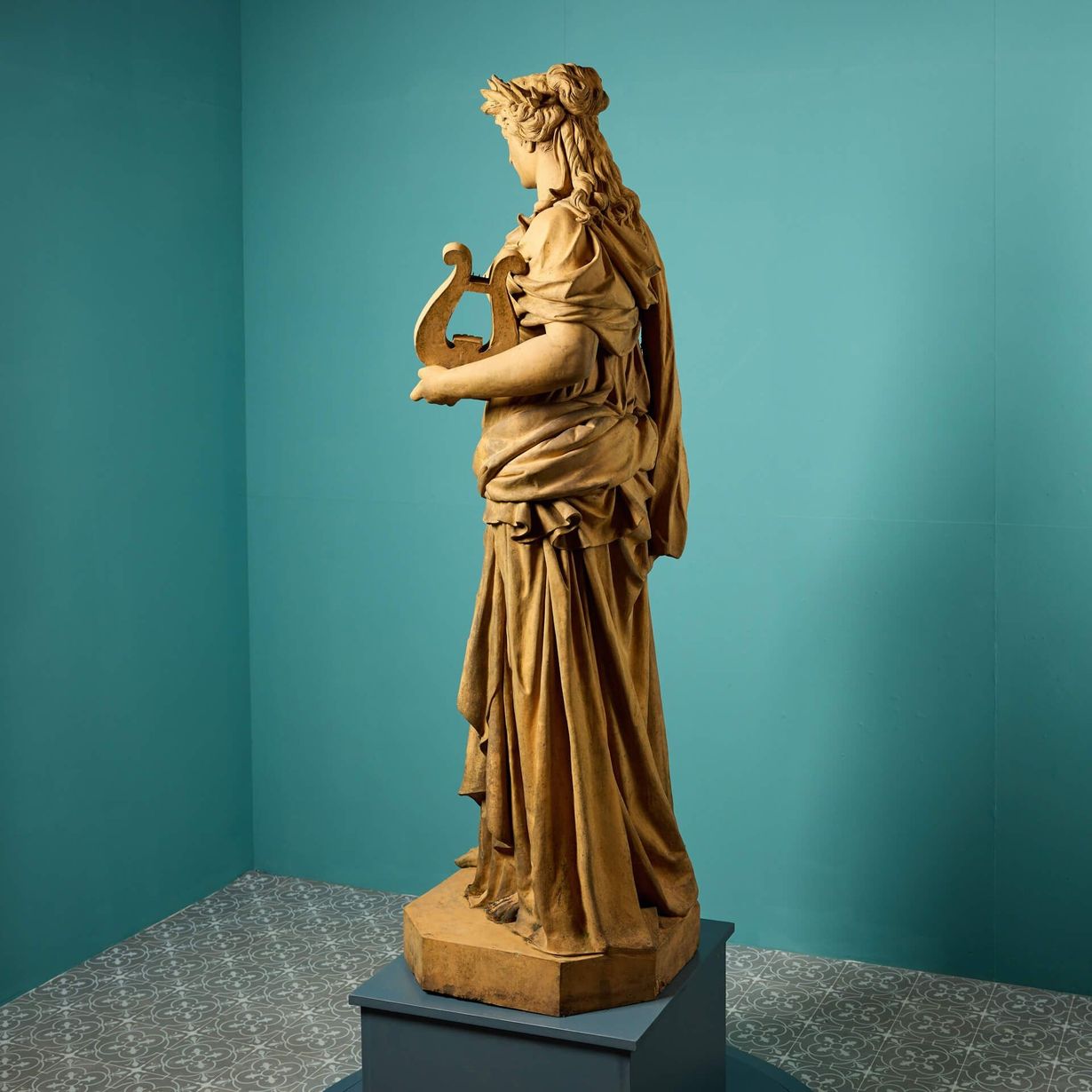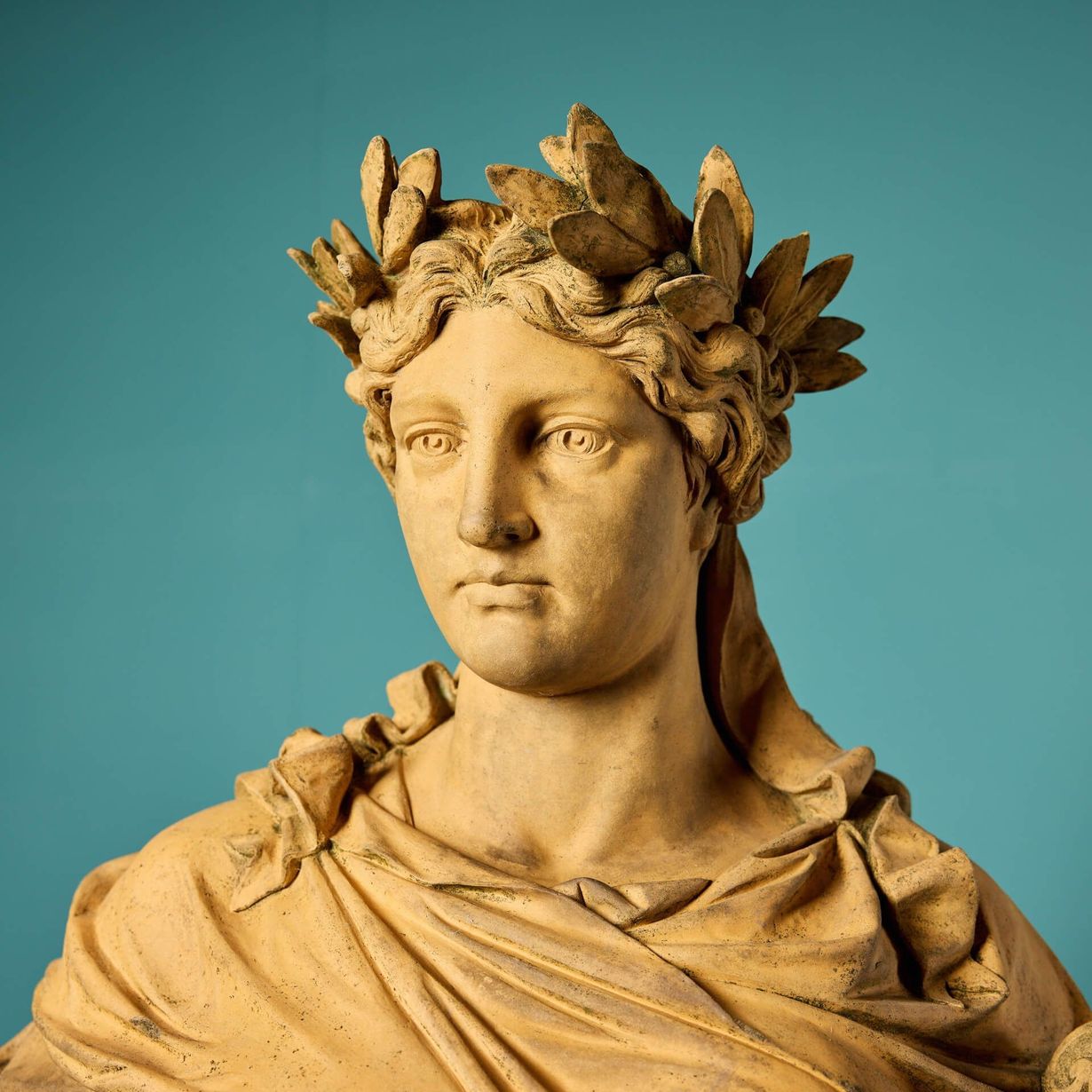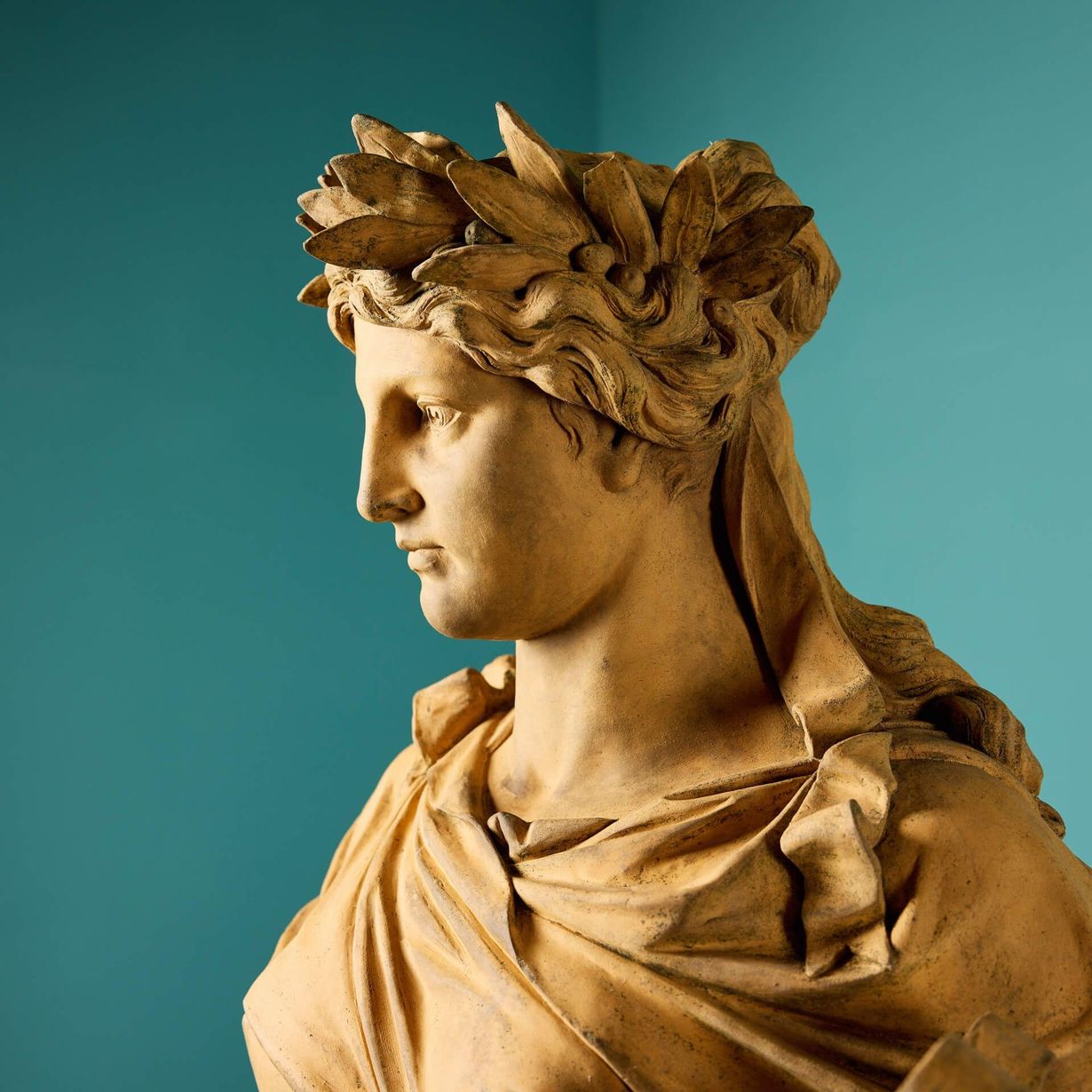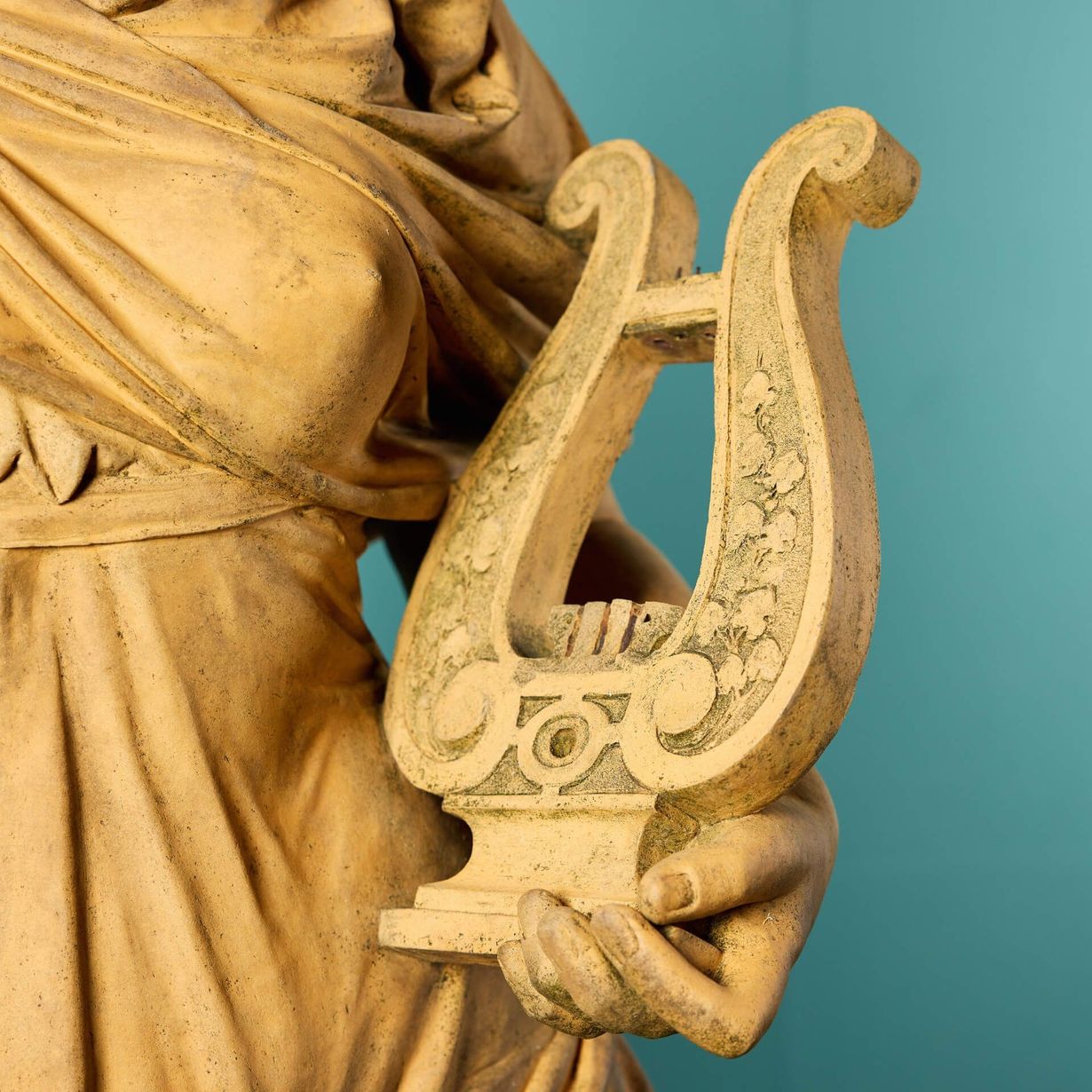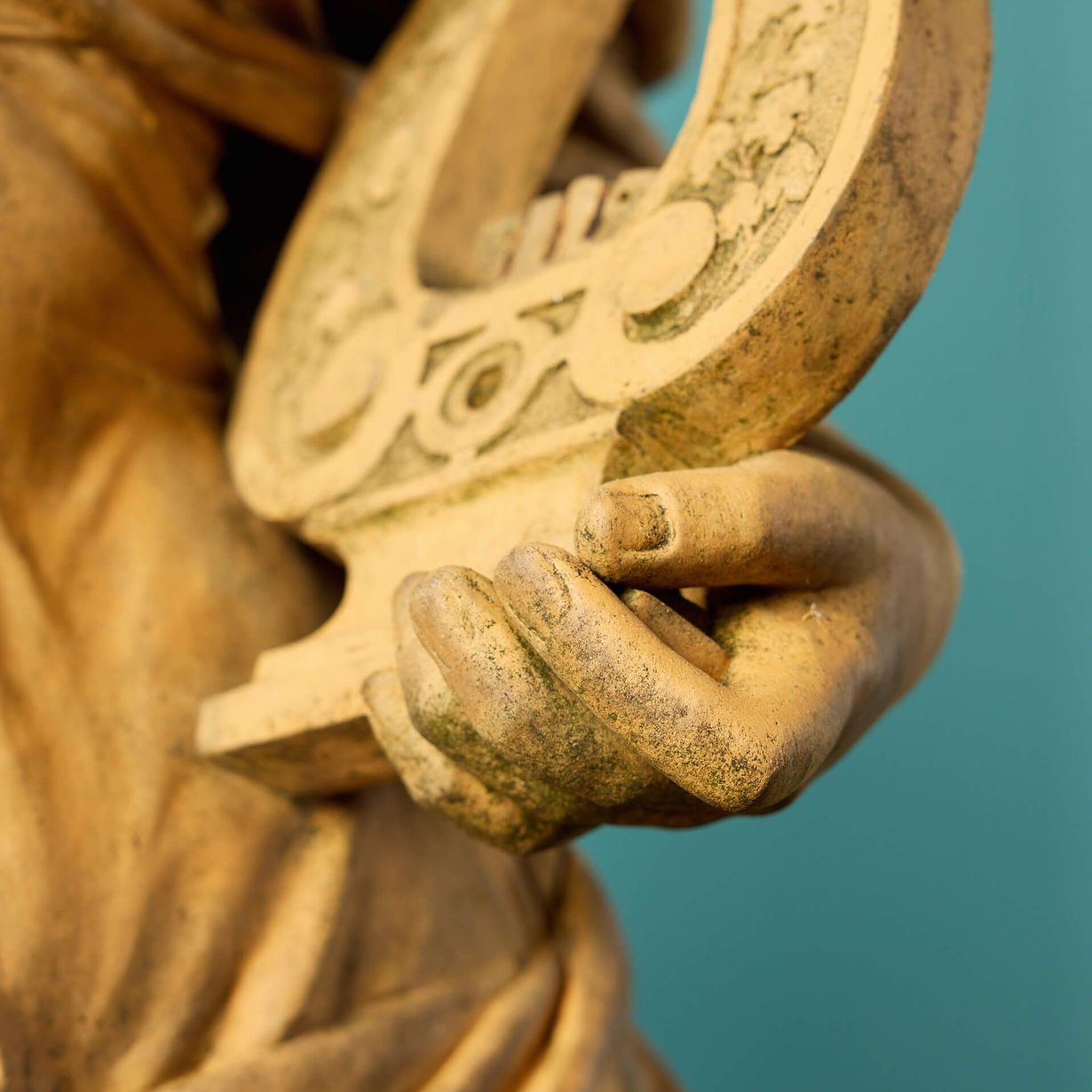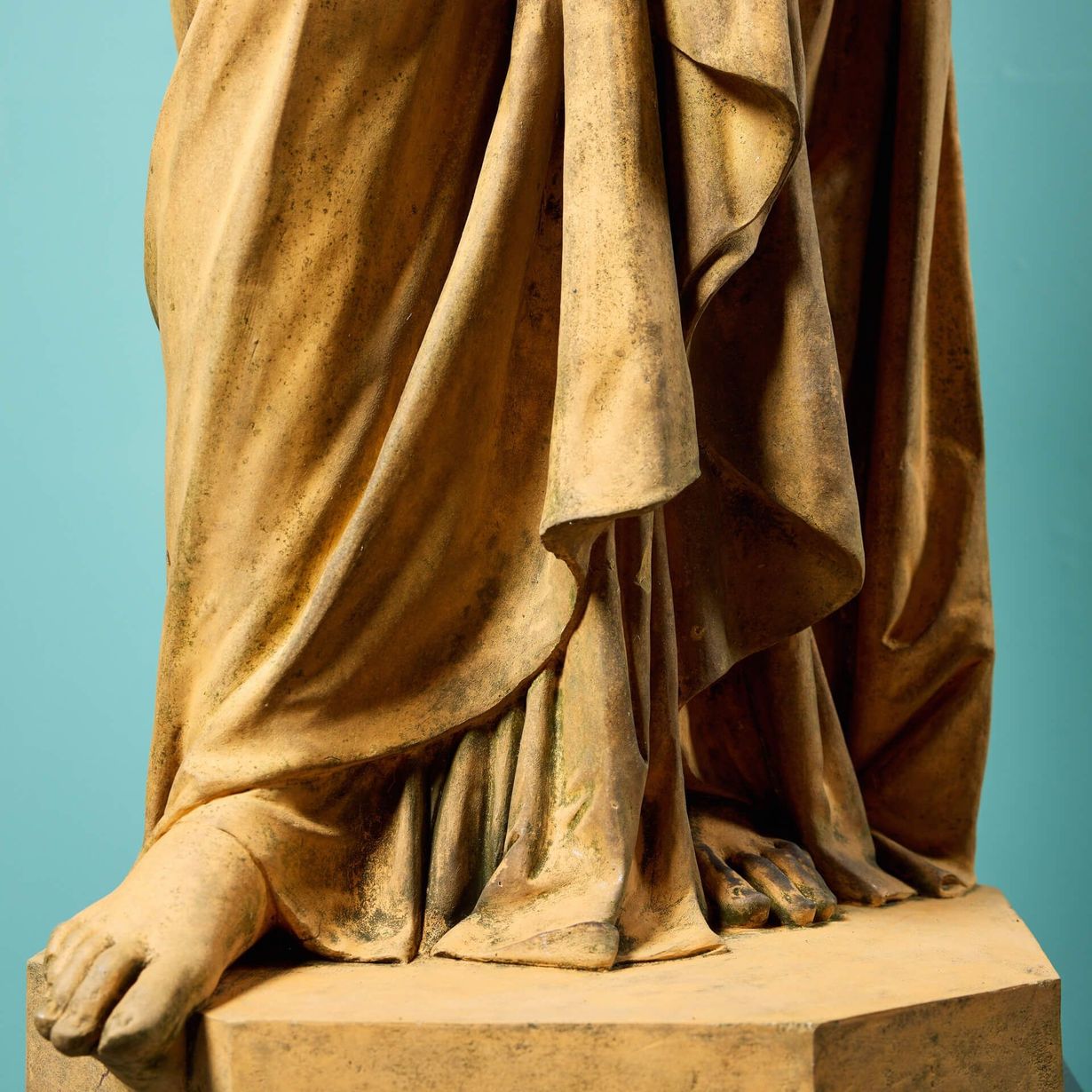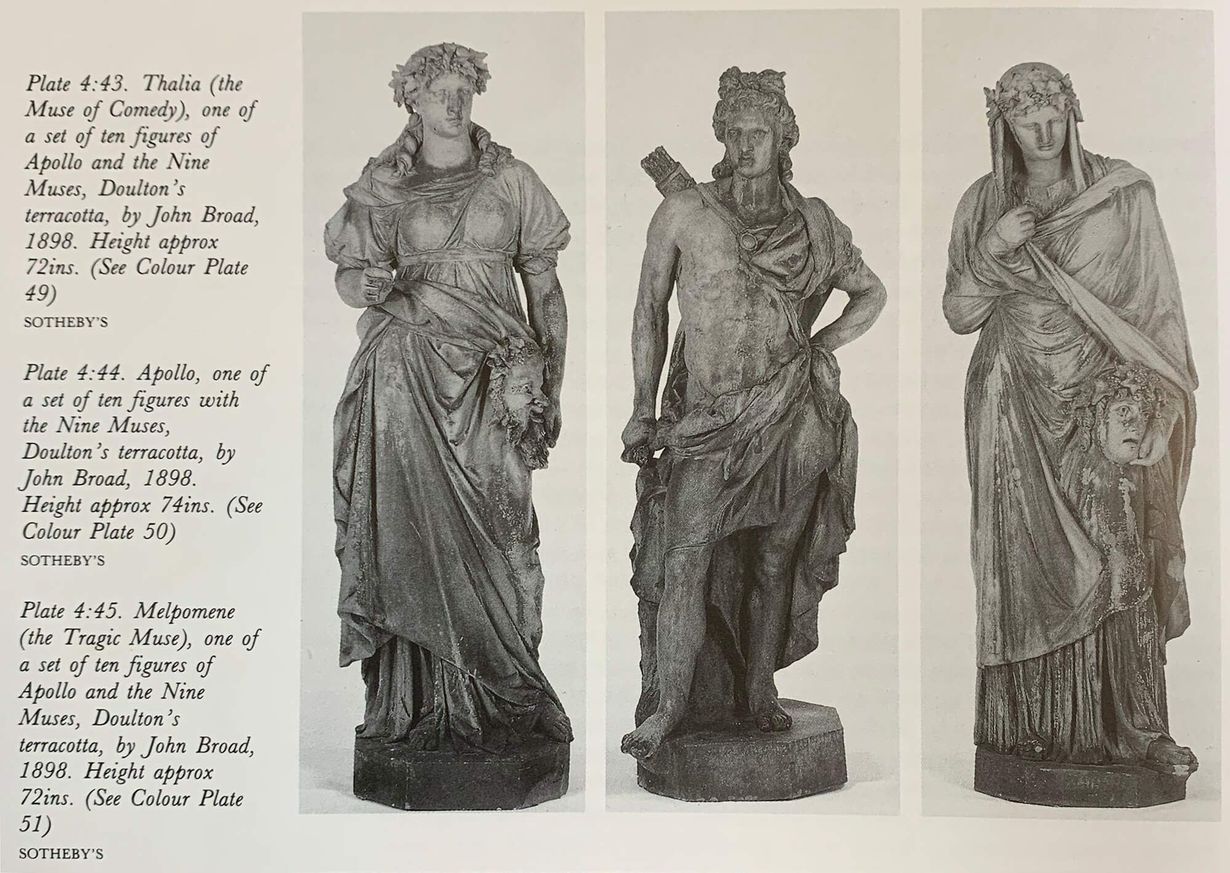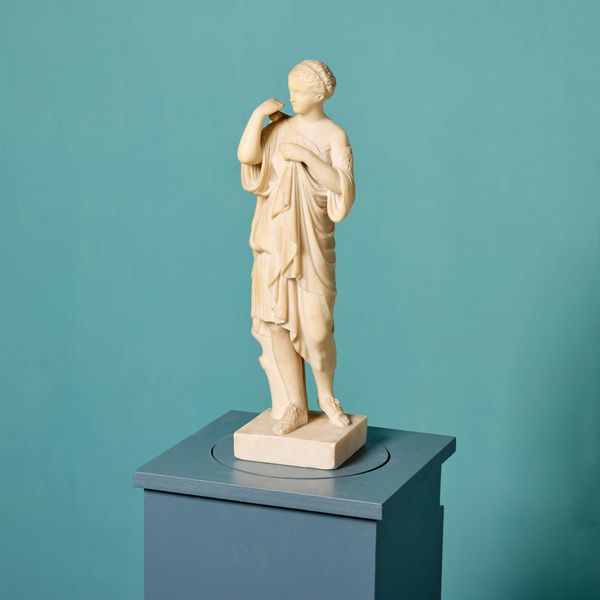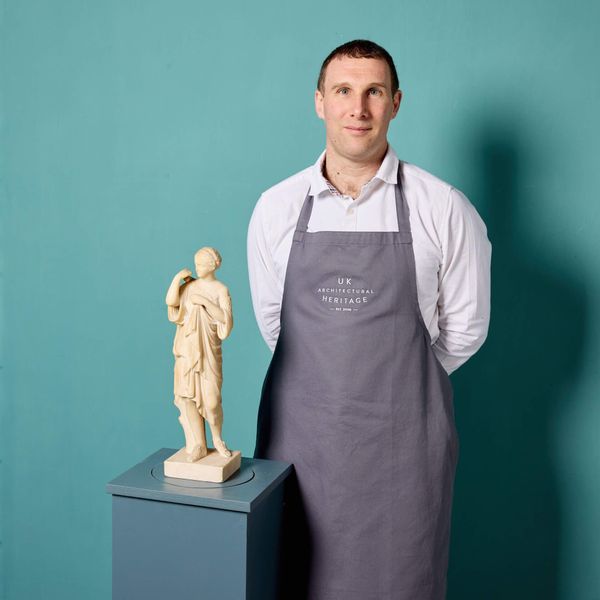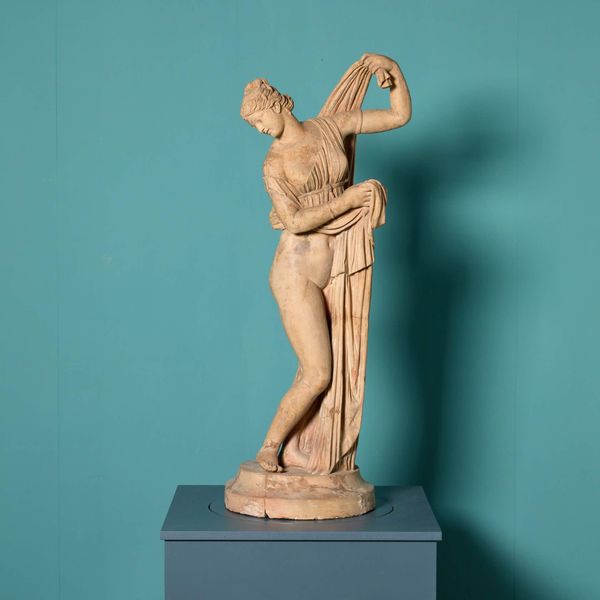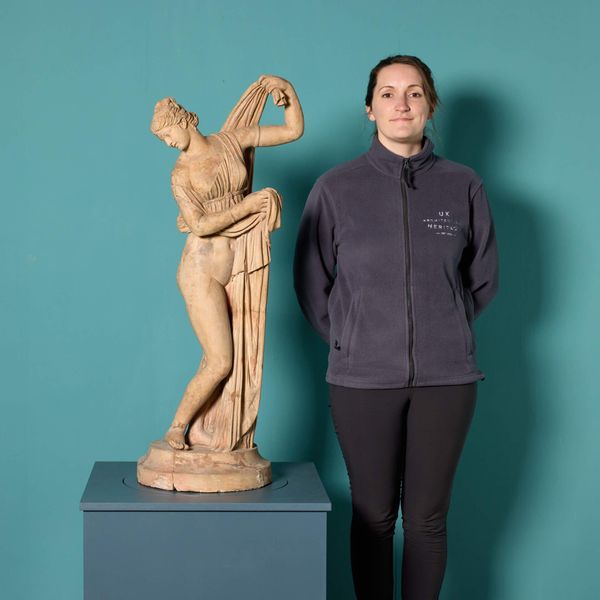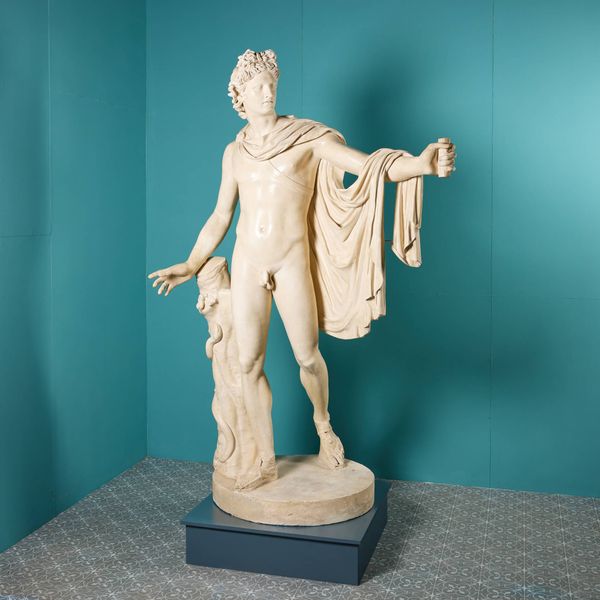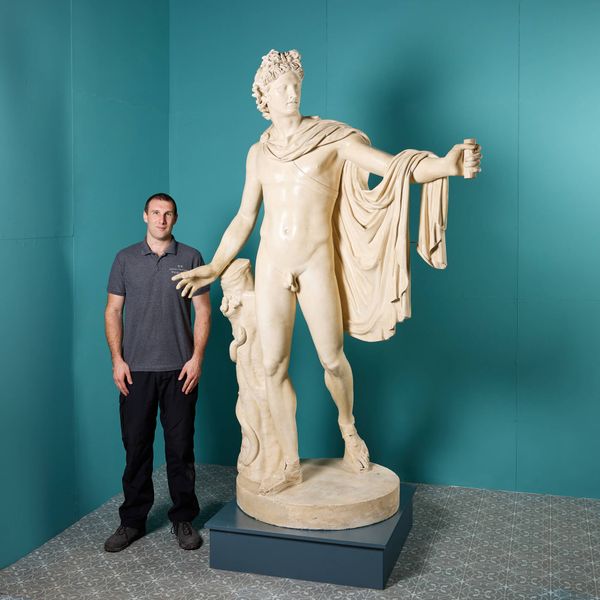About this piece
back to topDating from 1898, this impressive life-size statue of Erato once decorated the façade of the Apollo Inn in Tottenham Court Road, London. Modelled by John Broad for Doulton and Co, this Erato statue stood alongside Apollo and the other 8 muses on the exterior of the Apollo Inn public house from 1898 until the building’s demolition in 1961.
The Apollo Inn
Located on the corner of Tottenham Court Road and Torrington Place, London’s Apollo Inn was designed by English architect Charles Fitzroy Doll (1850-1929). When the building was demolished in 1961 for an extension to the Heal’s furniture store – which remains on the site to this day – this statue of Erato along with Apollo and the other 8 Muses were removed.
Erato Statue
This life-size statue of Erato was sourced from a garden in Chiswick. Known as the Greek goddess of lyric poetry, she is seen as she is often depicted wearing a crown wreath and holding a lyre.
Of the other 8 Greek Muses, the whereabouts of 4 is known.
Euterpe is located in St George’s Gardens near Kings Cross railway station, presented to the borough by Ambrose Heal of Heal’s London. Clio was reputedly bought by architectural historian, Nikolaus Pevsner, who placed it in his garden in Hampstead. Thalia and Melpomene are both in the Powerhouse Museum in Sydney, Australia and appear alongside Apollo in John Davis’s book ‘Antique Garden Ornament’ (pictured).
The location of the other 4 Muses – Polymnia, Ourania, Calliope and Terpsichore – remains unknown.
John Broad: Doulton & Co Sculptor
Though there is no maker’s mark, this beautiful statue of Erato is attributed to John Broad. During the late 19th and early 20th centuries, John Broad was one of Doulton & Co. of Lambeth, London’s most prominent artists. Bob Speel describes Broad’s style as favouring “a fairly athletic female figure, wide in the hip, muscular in the arm, but with delicacy and elegant fingers to the hands”; a clear trait distinction of Broad’s 9 Greek Muses including our Erato statue.
Unlike other statuary by Doulton & Co, Apollo and the Muses have an unusually deep buff colour with an almost golden hue. This can be explained by the fact that they were used as architectural decorations rather than garden statuary. As such, they have become stained and accumulated some black discolouration from the polluted atmosphere of London.
Additional Information:
Base measures W 50 x D 54cm.
Image source: Three of a set of ten figures of Apollo and the Nine Muses, Doulton’s terracotta by John Broad 1898 from ‘Antique Garden Ornament’ by John Davis.
